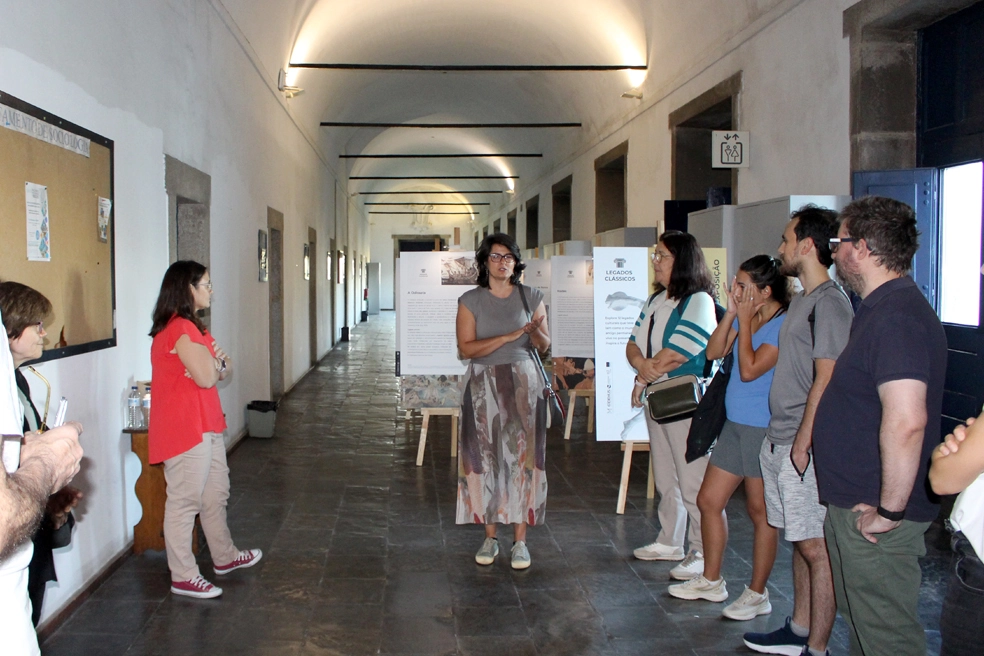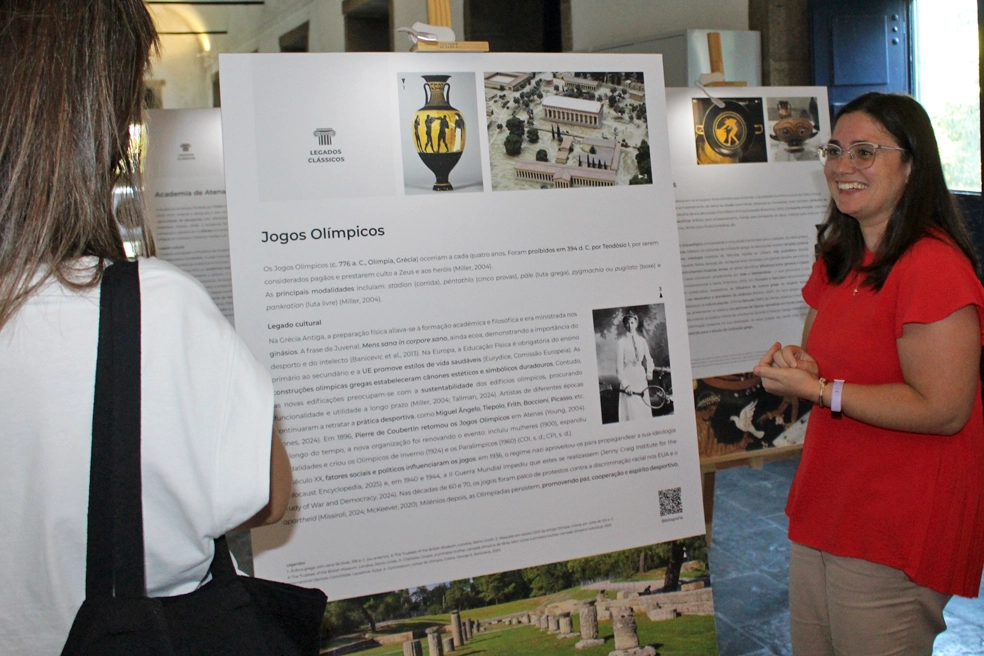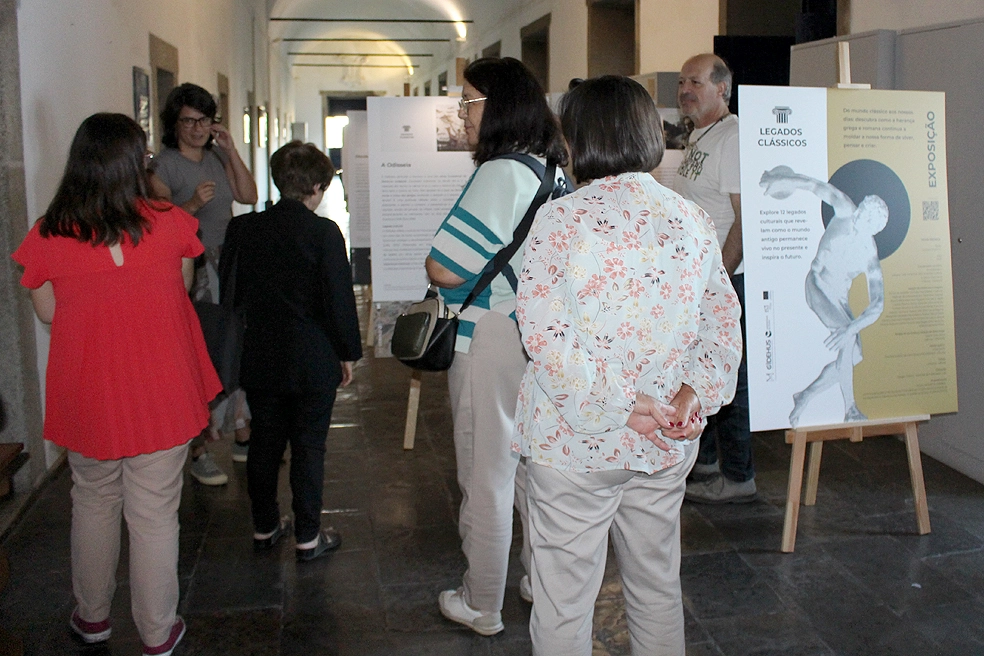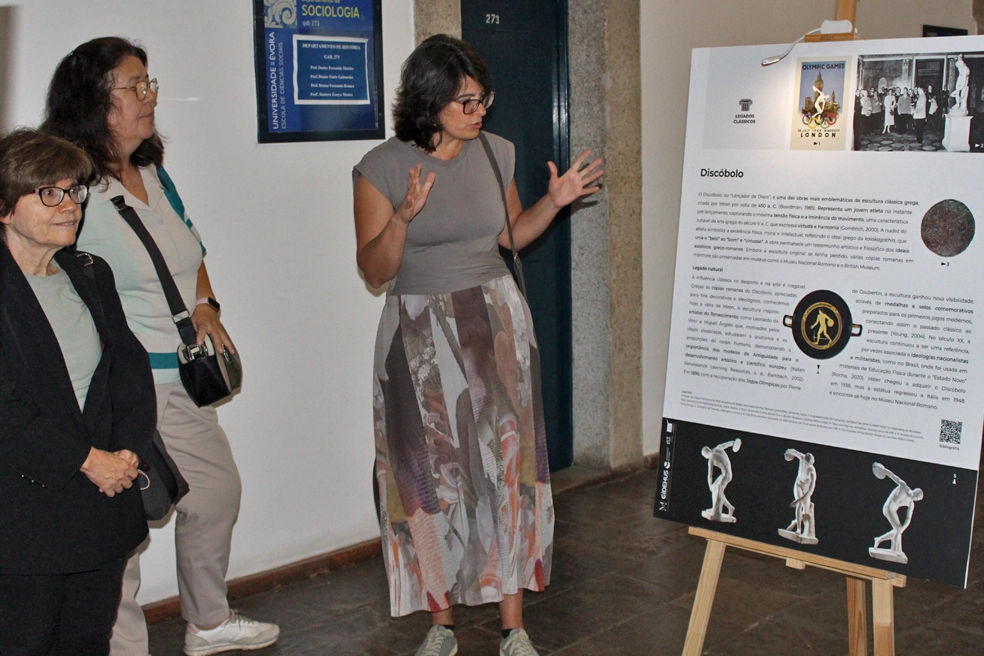The “Classical Legacies” exhibition was inaugurated on 6 October 2025 and will be on display at the Colégio do Espírito Santo (CES) of the University of Évora, in the Sociology corridor, until 7 November.
The Classical Legacies exhibition invites visitors to explore the fascinating cultural heritage of the Greek and Roman civilisations. Through a carefully curated selection of 12 significant elements – including artefacts, archaeological sites, classical texts, and other landmarks of Antiquity – the exhibition highlights the richness and enduring influence of the classical world, as well as its impact on the shaping of contemporary societies.
Each of the 12 elements is presented in poster format, with descriptions that contextualise their origin, function, and relevance in the ancient world. In addition to the historical explanation, each item is interpreted as an expression of the classical legacy, demonstrating its influence in areas such as architecture, philosophy, politics, literature, art, science, and ethics.
This approach encourages reflection on how this legacy remains embedded in European culture today. The exhibition offers an opportunity to reflect on the importance of studying cultural heritage, both as a foundation for understanding modern society and as a source of inspiration for the future of humanity, acknowledging the timeless values inherited from classical civilisation.


The exhibition was prepared by students of the course unit Classical Societies and Cultures, part of the Bachelor’s Degree in Cultural Heritage at the University of Évora (2004/2025). This course offers students a deeper understanding of the historical processes of the classical world, while also exploring the civilisational contribution of Greco-Roman culture to the formation of European identity and culture.
The course unit was taught by André Carneiro (responsible lecturer) and Sónia Bombico, both lecturers and researchers at the University of Évora. The students’ work was guided and supervised by Sónia Bombico and Leonor Dias Garcia, both researchers at CIDEHUS and members of the MEDHEUS project team – Mediterranean Cultural Heritage in EU Policies – under which the exhibition was developed. Graphic and design work was carried out by Luísa Rocha, Communications Officer at CIDEHUS.


The exhibition is intended to be itinerant and aims to be displayed in schools, exhibition halls, museums, or visitable archaeological sites, through the establishment of partnerships.